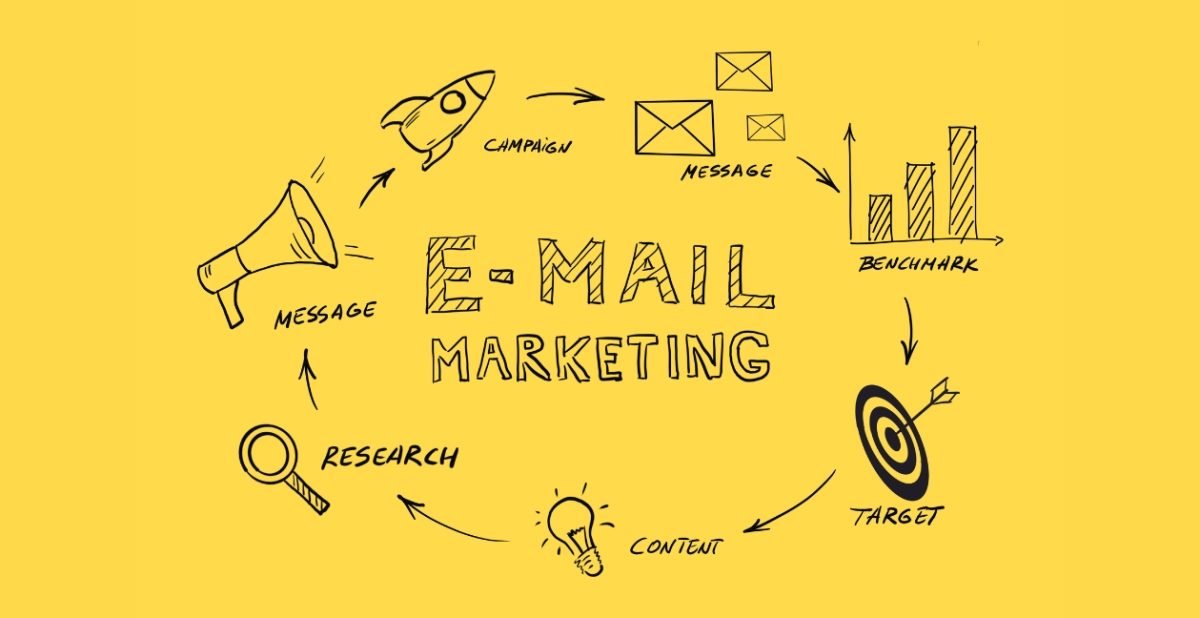People often have many ways to obtain or grow email lists for their future marketing campaigns, but certain methods may be more effective than others. When people are considering buying a list from a third-party provider, they must also consider the costs, pitfalls, and other possible options before they make a commitment.
How much does an email list cost and should people buy one?
A third-party email list will usually be a collection of email addresses and other possible details such as names or phone numbers. Many brokers and data companies compile these lists and sell them to businesses as part of their direct marketing efforts.
The cost of an email marketing list will depend on certain factors, including not only the quality of the list in regard to how targeted and well-maintained it is, but also the type and source. Many email lists are based on costs per thousand impressions, which is also commonly referred to as cost per mille (CPM).
A CPM is the cost for 1,000 email addresses. Most lists cost between $100 and $600 CPM, but consumer lists can cost between $100 and $400 per CPM, business lists can cost $600 to more than $1000 per CPM, and all list prices can vary depending on the content of the list, meaning lists that are more targeted will be more expensive.
The general rule will always be that business lists are more expensive than consumer lists because businesses are also the most likely to spend a lot of money based on the lists.
Will buying an email list help get you new customers?
For many companies across the United States, the idea of buying an email list can be appealing for multiple reasons. Litmus Research shows email drives a return on your investment (ROI) of $36 for every dollar spent.
Many businesses will prefer to look at the potential of what an email list could be used for and believe it dwarfs the amount spent. Email lists can provide companies with the names and contact information for potentially thousands of new customers.
Unfortunately, the one drawback to email lists is that people having their information included does not in any way indicate their willingness to express interest in any kind of company information. All of this is not to mention other possible issues that can arise with email addresses, such as certain addresses being invalid or emails bouncing back and increasing a bounce rate and damaging sender reputations with email service providers (ESPs).
Businesses must focus on developing their own email lists organically over time. This will mean tracking all communications and noting which customers correspond with a company.
Dangers of buying third-party email lists
While many companies offering to provide email lists will mention the scores of possible benefits, they will never mention any of the drawbacks. People need to be aware that there can be several consequences in some cases.
No guarantee of a return
Regardless of the cost of a broker-supplied email list, the list is not likely to be comprised of your ideal customers. This means that even when you seek a highly targeted list of contacts, the people who are named on the list still have not shown any interest in a company or its products or services, nor have they consented to receive marketing emails.
Companies need to be aware that contacting these people could be a violation of the General Data Protection Regulation (GDPR) that may result in fines. Any non-consenting contact will usually be a lesser quality lead since they are not as likely to convert as people who have consented to such communications.
The simple truth is that a company could spend thousands of dollars on email lists only to see few to no conversions. The bottom line is that the amount you spend is not going to be indicative of any kind of success.
Damage to your sender’s reputation and future campaign abilities
The major problem with sending emails to people who have not consented to receive them is the risk of emails then being marked as spam. Many people do this frequently with business contacts.
The problem with having your emails marked as spam is that when this happens too often, your spam rate will increase and you will gain a reputation with ESPs for sending unwanted business emails. ESPs may then automatically divert all of your messages, even those with consent, to a user’s junk folder and very much limit your long-term reach.
Damaging to your brand
Multiple studies have shown that companies sending non-personalized content without a user’s consent can create a negative experience for a brand and may be against the law in several countries. The result will be people not only unsubscribe from emails but also take their business elsewhere.
One survey of American consumers from Manifest found that nearly a quarter said they unsubscribe from emails they did not sign up to receive a 38% opt-out when the content they receive is irrelevant. Coveo also found that 76 percent of consumers would completely abandon a brand after three or fewer bad experiences while a little over one-in-10 said they’d move on at the first instance.
Possible fines for violating email compliance laws
When a business emails multiple people without their permission, they are at risk of breaking several American and European laws that can involve serious fines. The CAN-SPAM Act sets the rules for commercial email, establishes requirements for commercial messages, gives recipients the right to have companies stop emailing them, and determines penalties for violations.
When a business uses a third-party email list to contact a person who previously opted out of receiving email marketing, it can be a CAN-SPAM violation that may result in a fine of up to $46,517 per email. GDPR applies in the European Union and the United Kingdom and requires brands to obtain freely given, specific, informed, and unambiguous consent.
Building an email list organically for greater engagement
Businesses are far more likely to get engagement and conversions from contacting 100 highly-targeted, consenting recipients than they are by sending blast emails to half a million people from a generic third-party email list. Such is the case because when businesses know who they are talking to, they will also be more likely to be able to provide relevant, engaging content.
Some of the ways you can ensure you are reaching the right people with an email marketing strategy will include:
- Consider renting a third-party email list
Purchasing an email list usually allows a party to then reach a large number of people. Renting an email list could allow people to get the same benefit while minimizing fine risks.
Renting an email list can involve paying a third party to use their email list for a single blast or campaign that will be determined by an agreement. In these situations, the recipients of emails will have opted into receiving messages from a providing brand’s partners but their details are not shared as the provider will send a company’s content on their behalf.
Renting an email list will require finding a third party that has a similar audience to your own. This means that Software as a service (SaaS) providers can pay to send email blasts to the list of a company whose product integrates with theirs.
The focus on short-term results can make an email list rental a good option for flash promotions, new product launches, entering new markets, and reaching niche markets.
- Know your lead magnets
When a company is dealing with any new subscriber, they are going to have to demonstrate that a user will get some kind of benefit from reading their emails. In many cases, companies will need to immediately prove that they can make a difference in a person’s life.
A lead magnet is the marketing term for free items or services given away for the sole purpose of gathering contact details. Trial subscriptions, white papers, e-newsletters, and free consultations are common examples of lead magnets.
Strong lead magnets with proper teasers and calls to action (CTAs) can compel website visitors and social media followers to provide contact information. They could be pieces of high-value content such as reports, ebooks, or “how-to” guides, promotional emails such as discounts on first orders, product trials or demonstrations, and event invites.
Whatever type of asset a company deems most suitable for its audience, they must ensure the assets are relevant and matter to their potential subscribers, exclusive such that people could not obtain the same benefits elsewhere without providing personal information, and immediately useful to users.
- Embed sign-up links in social media profiles
Most businesses have social media profiles, and companies should ensure that their social media profiles also include sign-up forms, buttons, or links. Such efforts always make it easier for people to subscribe to newsletters or register with companies.
Consider CallHippo, which uses a sign-up link on its Facebook page to offer people a free trial of its cloud telephone service. In many cases, a shortened URL from a service like bit.ly can help companies avoid distracting from their CTAs.
- Capture data with QR codes
QR codes are machine-readable barcodes that, when scanned with compatible devices (usually smartphones), will redirect users to online content. Companies publish QR codes in places where their audience will see them to provide fast and convenient ways for people to learn more about brands and see what they offer before registering for mailing lists.
Companies using QR codes to build email lists will want to be sure to direct users to mobile-friendly sign-up landing pages where they can learn more about companies and enter their details, use clear CTAs with QR codes that let people scan to learn more, and using QR code generators to create dynamic QR codes.
Keeping an email list healthy for effective marketing campaigns
It is difficult to quantify how important an email list can be to a business. While the value often depends more on the quality than the quantity, the truth is that even the most thoughtfully compiled email lists can still deteriorate over time as people begin to opt out, change email addresses, or develop new needs.
This often means that businesses will experience low open rates, low click-through rates, high unsubscribe rates, and high bounce rates. Companies can practice good email hygiene and list management by using targeted messaging and CTAs to get the right kinds of subscribers and segmenting their lists using factors such as demographic and buyer journey stages so they can personalize their message content, setting followers’ expectations early to minimize unsubscribes and spam complaints, and cleaning email lists regularly by either re-engaging or removing inactive users.
There is no denying that the immediacy of a third-party email list can be an appealing offer for many companies, but the same businesses need to ask themselves if paying for an email list will really be a better option than engaging on their own. Investing the time to build high-quality email lists of targeted, consenting recipients will set businesses up to benefit from a more powerful and cost-effective digital marketing channel.
Find Email Marketing in Houston, TX | SERP Matrix
If you are dealing with any kind of email marketing issue, known that SERP Matrix offers email marketing services. We also handle search engine optimization (SEO) for all of our clients so they can always improve their general reputational concerns.
SERP Matrix also addresses link building issues using key performance indicators (KPIs) relating to effective link building. We will conduct a complete audit of your website to deliver a complete report to you.
We are eager to show how we can improve your digital marketing efforts. Call (713) 287-1134 or contact us online to set up a free consultation.








